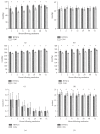Effect of High-Flow Nasal Cannula versus Conventional Oxygen Therapy for Patients with Thoracoscopic Lobectomy after Extubation
- PMID: 28298878
- PMCID: PMC5337350
- DOI: 10.1155/2017/7894631
Effect of High-Flow Nasal Cannula versus Conventional Oxygen Therapy for Patients with Thoracoscopic Lobectomy after Extubation
Abstract
Objective. To investigate whether high-flow nasal cannula (HFNC) oxygen therapy is superior to conventional oxygen therapy for reducing hypoxemia and postoperative pulmonary complications (PPC) in patients with thoracoscopic lobectomy after extubation. Methods. Patients with intermediate to high risk for PPC were enrolled in this study. Subjects were randomly assigned to HFNC group (HFNCG) or conventional oxygen group (COG) following extubation. Arterial blood samples were collected after extubation at 1, 2, 6, 12, 24, 48, and 72 h. Patients with postoperative hypoxemia and PPC were recorded. Adverse events were also documented. Results. Totally 110 patients were randomly assigned to HFNCG (n = 56) and COG (n = 54). The occurrence rate of hypoxemia in COG was twice more than that in HFNCG (29.62% versus 12.51%, P < 0.05) and PaO2, PaO2/FiO2, and SaO2/FiO2 were significantly improved in HFNCG (P < 0.05) in the first 72 h following extubation. Respiratory rate and incidence of reintubation as well as needing noninvasive ventilation were also decreased in HFNCG (P < 0.05), whereas the incidence of pneumonia and atelectasis were similar (P > 0.05). Adverse effects as throat and nasal pain occurred more frequently in COG. Conclusions. HFNC application improves oxygenation and reduces the risk of reintubation following thoracoscopic lobectomy but cannot decrease the incidence of PPC.
Conflict of interest statement
The authors have declared that no competing interests exist.
Figures


References
Publication types
MeSH terms
Substances
LinkOut - more resources
Full Text Sources
Other Literature Sources
Medical

